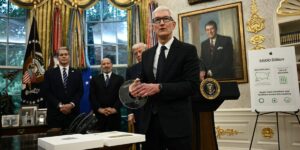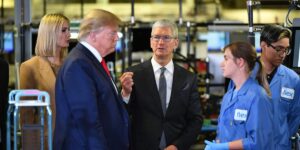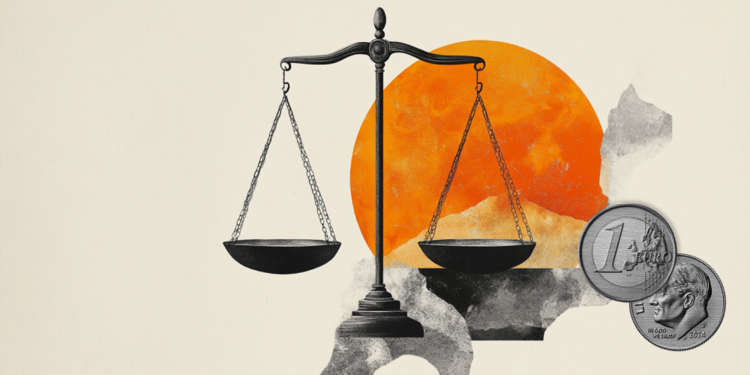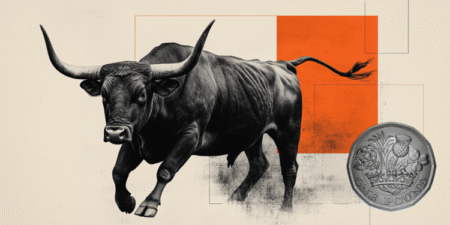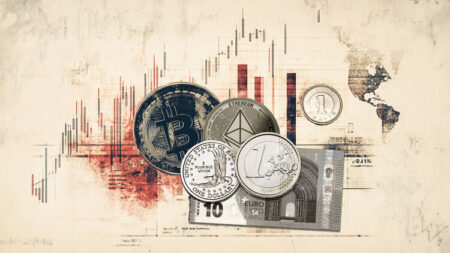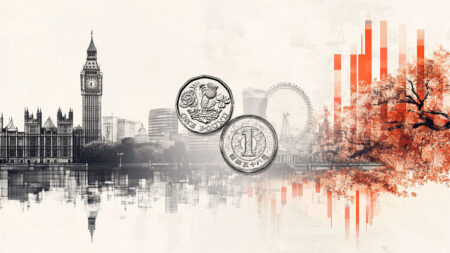- EUR/USD trades sideways around 1.1570, while investors await the Fed Chair’s announcement.
- US President Trump confirms that he will announce tariffs on semiconductors and chips soon.
- Investors await the Eurozone Retail Sales data for June.
The EUR/USD pair trades in a tight range around 1.1570 during the Asian trading session on Wednesday. The major currency pair consolidates as the US Dollar (USD) wobbles, with investors awaiting the announcement of the Federal Reserve’s (Fed) Chair, and Governor Adriana Kugler’s replacement, who resigned last week.
At the time of writing, the US Dollar Index (DXY), which tracks the Greenback’s value against six major currencies, trades in a tight range around 98.80.
On Tuesday, US President Donald Trump announced that he will appoint Fed’s Chair and Kugler’s replacement by the end of the week, and confirmed his choices to four for Chairman, including White House economic adviser Kevin Hassett, former Fed governor Kevin Warsh, and two other people.
“We’re also looking at the Fed chair, and that’s down to four people right now … Two Kevins and two other people,” Trump said to reporters.
US President Trump confirmed in an interview with CNBC on Tuesday that Treasury Secretary Scott Bessent is not his choice for the Fed’s Chair.
Meanwhile, tariff fears have renewed again as President Trump confirms that he will be announcing tariffs on “semiconductors and chips, and pharma” in the next week or so.
In the Eurozone, investors await the Retail Sales data, a key measure of consumer spending, for June, which will be published at 09:00 GMT. Month-on-month Retail Sales are estimated to have grown by 0.4% after declining 0.7% in May. On year, the consumer spending measure is expected to have risen strongly by 2.6%, against a 1.8% grown seen last month.
US Dollar FAQs
The US Dollar (USD) is the official currency of the United States of America, and the ‘de facto’ currency of a significant number of other countries where it is found in circulation alongside local notes. It is the most heavily traded currency in the world, accounting for over 88% of all global foreign exchange turnover, or an average of $6.6 trillion in transactions per day, according to data from 2022.
Following the second world war, the USD took over from the British Pound as the world’s reserve currency. For most of its history, the US Dollar was backed by Gold, until the Bretton Woods Agreement in 1971 when the Gold Standard went away.
The most important single factor impacting on the value of the US Dollar is monetary policy, which is shaped by the Federal Reserve (Fed). The Fed has two mandates: to achieve price stability (control inflation) and foster full employment. Its primary tool to achieve these two goals is by adjusting interest rates.
When prices are rising too quickly and inflation is above the Fed’s 2% target, the Fed will raise rates, which helps the USD value. When inflation falls below 2% or the Unemployment Rate is too high, the Fed may lower interest rates, which weighs on the Greenback.
In extreme situations, the Federal Reserve can also print more Dollars and enact quantitative easing (QE). QE is the process by which the Fed substantially increases the flow of credit in a stuck financial system.
It is a non-standard policy measure used when credit has dried up because banks will not lend to each other (out of the fear of counterparty default). It is a last resort when simply lowering interest rates is unlikely to achieve the necessary result. It was the Fed’s weapon of choice to combat the credit crunch that occurred during the Great Financial Crisis in 2008. It involves the Fed printing more Dollars and using them to buy US government bonds predominantly from financial institutions. QE usually leads to a weaker US Dollar.
Quantitative tightening (QT) is the reverse process whereby the Federal Reserve stops buying bonds from financial institutions and does not reinvest the principal from the bonds it holds maturing in new purchases. It is usually positive for the US Dollar.
Read the full article here


